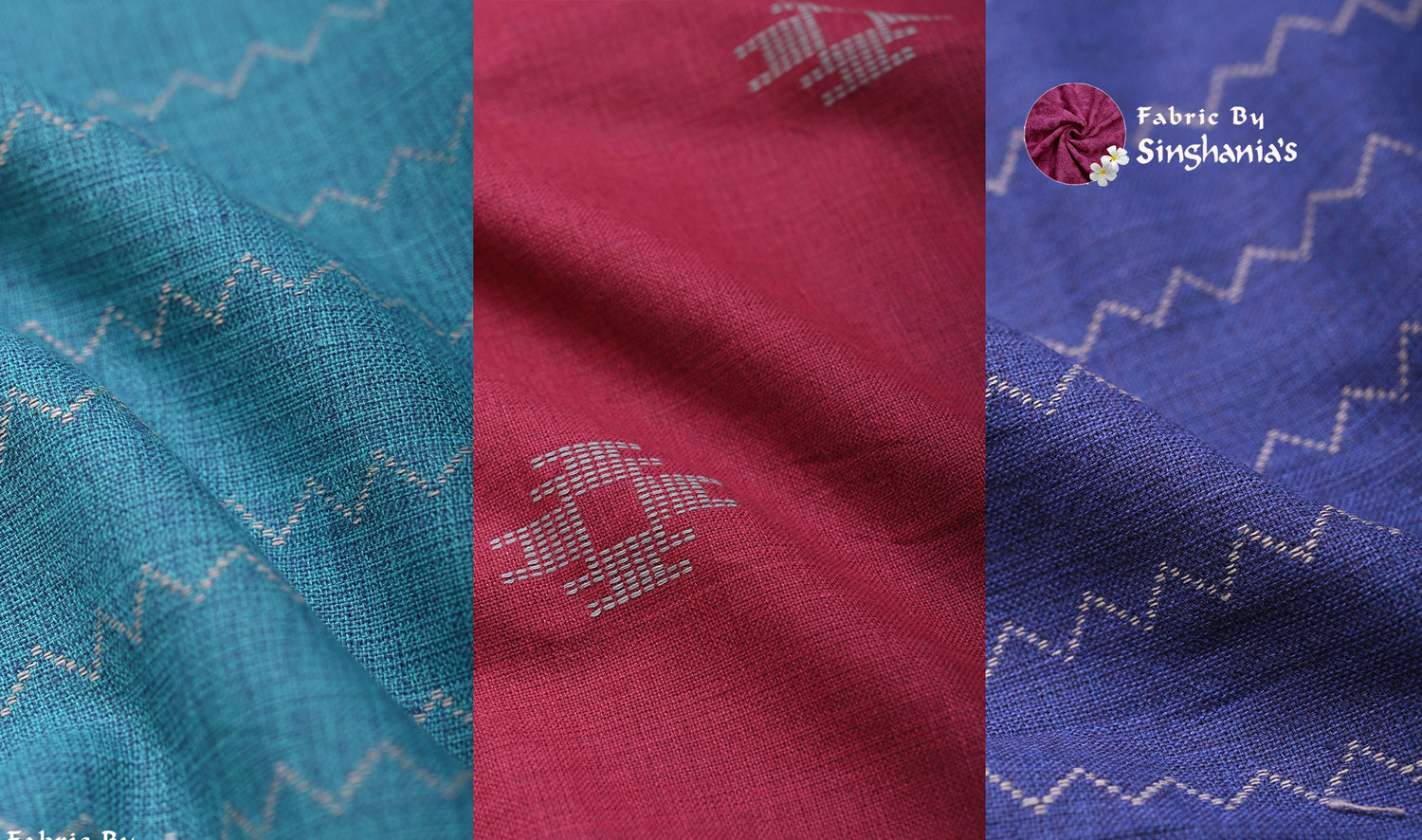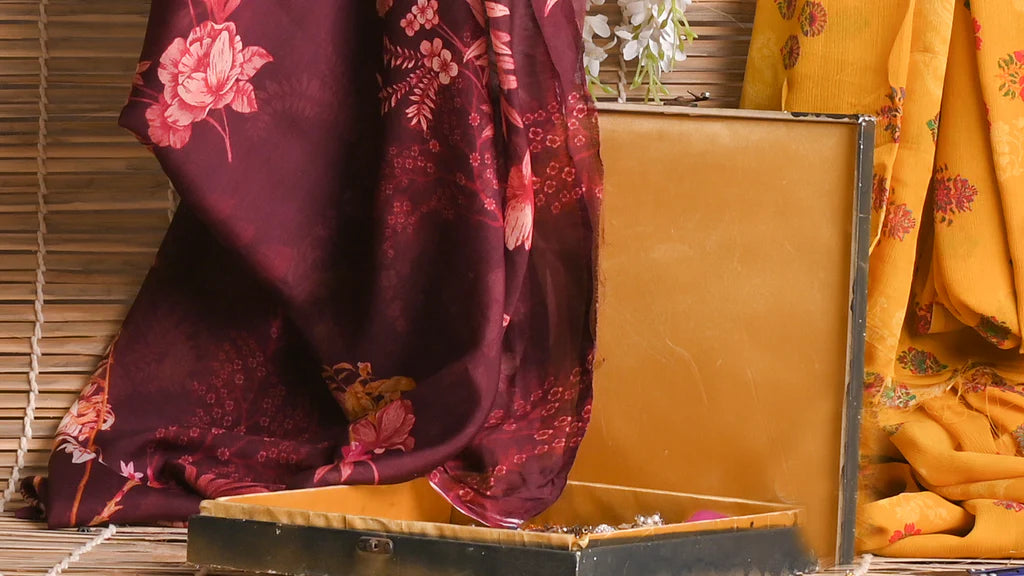
Handloom fabrics are a monument to history, artistry, and creativity in a world too often defined by mass production and conformity. These fabrics, crafted by master artisans employing ages-old techniques, have a rich cultural history. Let's explore the magical world of handloom fabrics, including their production method, adaptability, and use for both men's and women's special events and daily wear.
What are handloom fabrics?
Handloom fabrics are textiles woven manually on looms using skilled handcraft techniques passed down through generations. Unlike their mechanized equivalents, each handloom product reflects the weaver's distinct touch, resulting in unique products valued for their authenticity and individuality.
How Handloom Fabrics Are Made
Handloom fabrics are made from carefully sourced natural fibers such as cotton, silk, wool, or combinations of these. These fibers are spun into yarns, dyed in brilliant colors using time-honored procedures, and delicately woven on handlooms. Weavers carefully interlace the threads to create complex patterns and designs, which are frequently inspired by regional themes or cultural histories. The repetitive tapping of the loom transforms into a symphony of labor, bringing life to each fabric with each pass.
- Raw Material Selection: The first step in the procedure is to choose the raw materials, which could be cotton, silk, wool, or any natural fiber. The quality of the finished fabric is heavily influenced by the quality of its raw components.
- Yarn Preparation: The chosen raw ingredients are spun into yarn. This may involve carding, combing, and spinning to create the required yarn thickness, texture, and strength.
- Dyeing (if necessary): If colored fabrics are desired, the yarns are dyed during this stage. Natural dyes derived from plants, roots, or minerals are commonly used in handloom fabric manufacture; however, synthetic dyes are also employed in rare instances.
- Loom Setup: The handloom is threaded with warp (lengthwise) and weft (widthwise) threads. The warp threads are stretched lengthwise on the loom to form the fabric's underlying structure, while the weft threads are interlaced horizontally through the warp threads when weaving.
- Weaving: The weaver runs the handloom manually, raising and lowering the warp threads with pedals and/or hand levers. This generates gaps known as sheds, through which the weft thread is passed horizontally, interlacing with the warp thread to form the fabric. Different weaving processes may create a variety of patterns and textures in fabric.
- Finishing: After the weaving is complete, the fabric is washed, starched, and ironed to improve its appearance and texture.
- Trimming and Quality Check: After completing, any surplus threads or abnormalities in the cloth are trimmed and thoroughly scrutinized for flaws.
- Packaging and Distribution: The final handloom fabrics are folded, packaged, and ready for shipment to markets, shops, or direct to clients.
Versatility in Crafting
One of the most impressive aspects of handloom fabrics is their adaptability. They can be transformed into a variety of clothes and accessories, including flowing sarees and beautiful kurtas, scarves, shawls, and even furniture. Handloom fabrics' beauty and texture suit both conventional and modern designs, making them a classic choice for fashion lovers worldwide.
Occasions and Seasons: Where Handloom Shines
Handloom fabrics represent flair, elegance, and ethnic pride. Men can wear stylish kurtas, perfect shirts, or sleek jackets made from handloom textiles, which are appropriate for both informal and formal occasions. Women exude beauty and grace as they wear shimmering sarees, flowing dupattas, and fully embroidered outfits.
In the burning sun of summer, lightweight cotton handlooms provide breathable comfort, while beautiful silk variations provide luxury for festive occasions. As autumn arrives, comforting woolen handlooms provide warmth and coziness, with rich textures that lend depth to winter ensembles. Handloom fabrics seamlessly shift between seasons, adjusting to every occasion with simple charm.
Destinations for Handloom Majesty
India, with its rich textile legacy, has a number of locations known for their handloom workmanship. The lively hues of Gujarat's Patola sarees, the beautiful Jamdani weaves of West Bengal, and the classic beauty of Uttar Pradesh's Banarasi silk fabric—each area tells a unique tale via its handloom products.
Beyond India, countries such as Bangladesh, Sri Lanka, and Indonesia have long-standing handloom weaving traditions, each adding their own unique style to the worldwide weave of fabric creation.
Handloom fabrics are cultural ambassadors, telling stories about tradition, talent, and identity. From artisans' looms to connoisseurs' wardrobes, handloom fabrics exemplify the elegance of slow fashion and the enduring charm of craftsmanship, We not only enhance our beauty but also pay tribute to the hands and hearts that created each masterpiece.
The Best Handloom Collections Await
Fabric by Singhania's is well-known for crafting the most stunning handloom collections. Their dedication to preserving the tradition of handloom weaving while incorporating modern aspects has garnered them a devoted base among fabric enthusiasts. Fabric by Singhania's handloom collection are a perfect balance of tradition and modernity.
Don't miss the opportunity to explore. Singhanias' handloom collection is stunning, with a diverse range of textures, patterns, and colors. Visit their stores or browse their online selection to find the ideal handloom collection that reflects your personal taste and honors the enduring tradition of this treasured craft.



